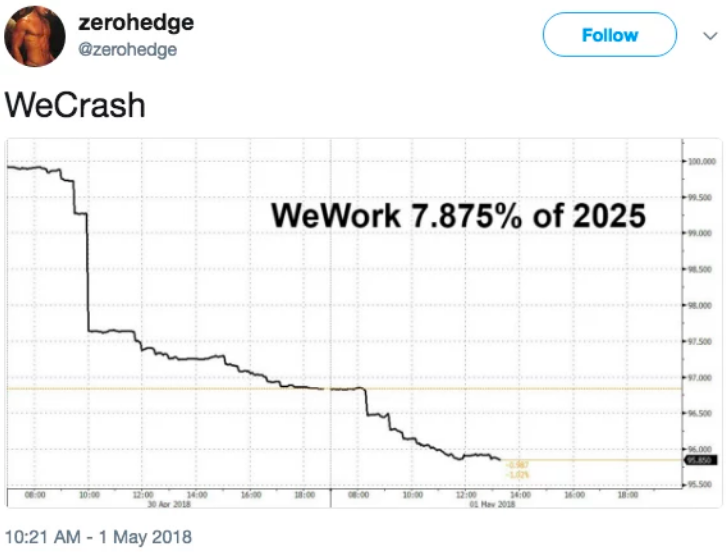This week William Cohan and Vanity Fair released a once-in-fifteen-years piece with the infamous Sears Holding ($SHLD) investor, Eddie Lampert. It’s a whopper and worth a read.
The mess that is Sears is quantified here:
“But today those triumphs are largely obscured by his worst mistake: the 2005 merging of Sears, the iconic retailer whose doorstop mail-order catalogue was once a fixture in nearly every American home, with the downmarket Kmart chain, which he had brought out of bankruptcy in 2003. Twelve years on, this blundering into retail has made him a poster boy for what some people think is wrong with Wall Street and, in particular, hedge funds. Under his management the number of Sears and Kmart stores nationwide has shrunk to 1,207 from 5,670 at its peak, in the 2000s, and at least 200,000 Sears and Kmart employees have been thrown out of work. The pension fund, for retired Sears employees, is underfunded by around $1.6 billion, and both Lampert and Sears are being sued for investing employees’ retirement money in Sears stock, when the top brass allegedly knew it was a terrible investment.”
To put this in perspective, people are in an uproar about the liquidation of Toys R Us which has 33,000 employees. Sears, while still in business, has had attrition of 6x that. But wait. That’s just on the human capital side. What about the actual capital side:
“In 2013, Lampert, who was chairman of the board, had himself named C.E.O. of Sears Holdings, as the combined company is known. He’s had a rough four years since then. The company has suffered some $10.4 billion in losses and a revenue decline of 47 percent, to $22 billion.”
And on the financial side:
“…Sears Holdings stock price has slumped to $2 a share, down considerably from the high of $134 per share some 11 years ago. Sears Holdings now has a market value of around $250 million, making Lampert’s nearly 60 percent stake worth $150 million.”
How. The. Eff. Is. This. Business. Still. Alive. Well, this:
“The vultures are circling, waiting for Lampert to throw in the towel so they can try to make money by buying Sears’s discounted debt. But Lampert continues to claim that’s not going to happen if he can help it.”
Gotta give the guy credit for perseverance.
For those who may be too young or too weathered to remember, KMart was actually a successful turnaround for the first few years after Lampert converted his (acquired) debt position into equity. Operating profit was $1.3 billion in 2004 and 2005. But then he decided to combine KMart and Sears. Thereafter, the big issues began.
Interestingly, the piece suggests that Lampert was “ahead of his time” by de-emphasizing investment in the in-store experience and focusing on e-commerce. But shoppers didn’t buy online. Cohan writes,
“At the time they were just not comfortable enough with the technology to do so. Whatever the reason, Sears’s Web site never remotely rivaled the sales in the stores. Or on Amazon.”
Maybe because, even today, the website is a cluttered mess that will give even those with the most robust heart arrhythmia. In that respect, the online experience mirrors the offline experience. And this runs afoul of current theories of retail. Jeremy Liew of Litespeed Venture Partners writes about new “omnichannel” retailers like Bonobos, Allbirds, Away, Modcloth and Glossier and the new “customer acquisition channel”:
“All retailers need to be wherever their customers are. And for all retailers, their best customers are in every channel. This is just as true for DNVBs. For Bonobos for example, customers who buy first in store spend 2x more and have half the return rate. But more importantly, they spend 30% more online over the next 12 months.
But these DNVBs think about physical retail in a very different way than incumbent retailers. They are not measured purely on “four wall profitability” or $/sq foot, some of the traditional metrics in retail. Many of the stores are showrooms, they don’t carry full inventory. Most support iPads or other ways to browse the online catalogue.
These brands understand the importance of experiential marketing, and they see their physical spaces as a platform to engage deeply with their customers. In short, they see physical retail as customer acquisition channels for their online business. In some cases, a contribution positive customer acquisition channel. In others, a customer acquisition channel whose costs you can compare to Facebook, Instagram, Google or other customer acquisition channels. But always the online business grows.”
For this to work, Everlane’s Michael Preysman says you “must make it look good.” If only Lampert bought in to this premise. Instead, Sears’ online experience mirrors the offline experience: horrible user experience + dilapidated stores = a wholesale contravention of, as Liew points out, everything that successful retailers are doing today. It’s the customer rejection channel. Hence the suspicions from outsiders — which Lampert vehemently denies — that he’s treating Sears like a private company, milking the company for his own benefit, and slowly liquidating it to the point of bankruptcy. Once in bankruptcy, Lampert will allegedly be able to leverage his place in the capital structure to own the company on the backend. It would be a leaner version of Sears — free of debt, onerous leases and pension obligations. Why invest in customer or employee experience now if this is a possibility later? Good question.



























